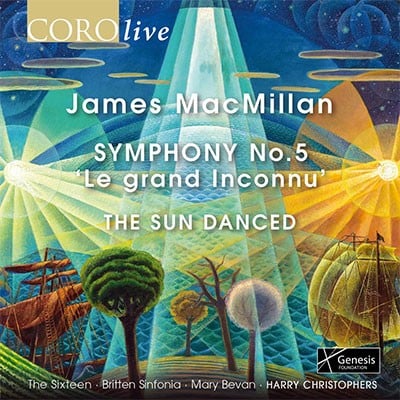Text from the Apparitions of the Angel and of Our Lady and from the Miracle of the Sun at Fátima (Pt, L, E)
2.1.corA.2.1.dbn-4.2.3.1-timp.perc(1):glsp/2tgl(large, smaller)/SD/timbales/BD/susp.cym/tam-t-harp-strings
Abbreviations (PDF)
Boosey & Hawkes
Choral level of difficulty: Level 5 (5 greatest)
This work is yet another blistering response by MacMillan to a story which has simple magic at its heart. Whether or not you believe in the power of the Virgin Mary to work miracles in the early 20th century you can still become completely engrossed in the telling of this story over a century later.
The work commemorated the centenary of the apparitions of Mary to three shepherd children. In a series of apparitions Mary (called Our Lady of Fatima) promised a miracle on 13 October 1917. Part of MacMillan’s text quotes the words she is reported to have spoken to these children, asking them to come for six months on the thirteenth day of the month at the same time. She then promised a seventh visit. In addition she promised that the war would end but also said that a worse one would occur if people did not turn to God. She also asked for a chapel to be built in her honour. The miracle was reported to be a mysterious distortion of the sun which appeared to dance, to come towards the earth and emit radiant colours.
The work is for soprano soloist, choir and orchestra and was commissioned by the Shrine of Fatima in Portugal for the centenary of the apparitions and the miracle. MacMillan uses three languages: Latin, English and Portuguese. It is in a single continuous movement but with various subsections which give it colour and variety, creating the impression of a symphonic structure.
Key points in its progress are the beautifully mysterious orchestral opening with the basses joining later with Mary’s words from her first apparition which develops powerfully before the second section which is a deeply moving soprano solo aria during which the end of the war is predicted. The next section is a ‘dance-like’ orchestral ‘fantasy’. This is thrillingly rhythmical and the choir eventually joins. Then, finally, there is another soprano solo ‘arioso’ where floating top B flats at the end of each phrase show the level of soloist required. The ending is joyful and affirming.
This is a very special work which engages on so many levels. It requires a professional approach and while the choral parts are not anything like as complex as some of MacMillan’s other works, their context makes them challenging – but what a challenge to accept and to master!
Repertoire Note by Paul Spicer

Mary Bevan/The Sixteen/Genesis Sixteen/
Britten Sinfonia/Harry Christophers
Coro COR16179

